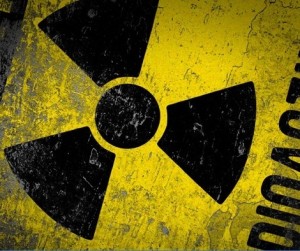This story further confirms what we all have been speculating these past months. I have added pictures that also confirm what Hiroaki Koide is saying.
Hiroaki Koide, an assistant professor at Kyoto University's Research Reactor Institute. (Mainichi)
 As a radiation metrology and nuclear safety expert at Kyoto University's Research Reactor Institute, Hiroaki Koide has been critical of how the government and Tokyo Electric Power Co. (TEPCO) have handled the nuclear disaster at the Fukushima No. 1 nuclear plant. Below, he shares what he thinks may happen in the coming weeks, months and years.
As a radiation metrology and nuclear safety expert at Kyoto University's Research Reactor Institute, Hiroaki Koide has been critical of how the government and Tokyo Electric Power Co. (TEPCO) have handled the nuclear disaster at the Fukushima No. 1 nuclear plant. Below, he shares what he thinks may happen in the coming weeks, months and years.The nuclear disaster is ongoing. Immediately after the crisis first began to unfold, I thought that we'd see a definitive outcome within a week. However, with radioactive materials yet to be contained, we've remained in the unsettling state of not knowing how things are going to turn out.
Without accurate information about what's happening inside the reactors, there's a need to consider various scenarios. At present, I believe that there is a possibility that massive amounts of radioactive materials will be released into the environment again.
At the No. 1 reactor, there's a chance that melted fuel has burned through the bottom of the pressure vessel, the containment vessel and the floor of the reactor building, and has sunk into the ground. From there, radioactive materials may be seeping into the ocean and groundwater.
The use of water to cool down the reactors immediately after the crisis first began resulted in 110,000 cubic meters of radiation-tainted water. Some of that water is probably leaking through the cracks in the concrete reactor buildings produced by the March 11 quake. Contaminated water was found flowing through cracks near an intake canal, but I think that's just the tip of the iceberg. I believe that contaminated water is still leaking underground, where we can't see it. Because of this, I believe immediate action must be taken to build underground water barriers that would close off the nuclear power plant to the outside world and prevent radioactive materials from spreading. The important thing is to stop any further diffusion of radioactive materials.
The government and plant operator TEPCO are trumpeting the operation of the circulation cooling system, as if it marks a successful resolution to the disaster. However, radiation continues to leak from the reactors. The longer the circulation cooling system keeps running, the more radioactive waste it will accumulate. It isn't really leading us in the direction we need to go.
 It's doubtful that there's even a need to keep pouring water into the No.1 reactor, where nuclear fuel is suspected to have burned through the pressure vessel. Meanwhile, it is necessary to keep cooling the No. 2 and 3 reactors, which are believed to still contain some fuel, but the cooling system itself is unstable. If the fuel were to become overheated again and melt, coming into contact with water and trigger a steam explosion, more radioactive materials will be released.
It's doubtful that there's even a need to keep pouring water into the No.1 reactor, where nuclear fuel is suspected to have burned through the pressure vessel. Meanwhile, it is necessary to keep cooling the No. 2 and 3 reactors, which are believed to still contain some fuel, but the cooling system itself is unstable. If the fuel were to become overheated again and melt, coming into contact with water and trigger a steam explosion, more radioactive materials will be released.TEPCO says it is aiming to bring the No. 1, 2 and 3 reactors to cold shutdown by January 2012. Cold shutdown, however, entails bringing the temperature of sound nuclear fuel in pressure vessels below 100 degrees Celsius. It would be one thing to aim for this in April, when the government had yet to confirm that a meltdown had indeed taken place. But what is the point of "aiming for cold shutdown" now, when we know that fuel is no longer sound?
In the days ahead, the storage of enormous quantities of radiation-contaminated waste, including tainted mud resulting from the decontamination process, will become a major problem. Because the responsibility for spreading nuclear materials into the environment lies with TEPCO, it makes sense to bring all the radioactive waste to TEPCO headquarters in Tokyo.
Since that's not possible, the waste should be taken to the grounds of the nuclear power plant. If the plant is not large enough to accommodate all the waste, then a location close to the plant will also have to be designated as a nuclear graveyard. However, no one should take advantage of the chaos and force Fukushima to host interim radioactive waste repositories for spent fuel from other nuclear power plants.
Recovering the melted nuclear fuel is another huge challenge. I can't even imagine how that could be done. When the Three Mile Island accident took place in 1972, the melted nuclear fuel had stayed within the pressure vessel, making defueling possible. With Fukushima, however, there is a possibility that nuclear fuel has fallen into the ground, in which case it will take 10 or 20 years to recover it. We are now head to head with a situation that mankind has never faced before.
(Mainichi Japan) September 9, 2011









No comments:
Post a Comment